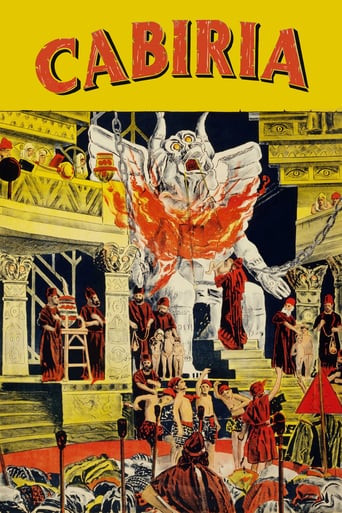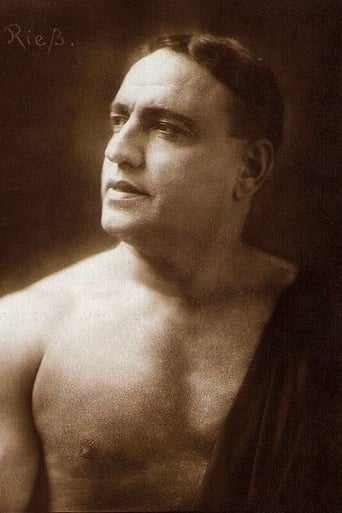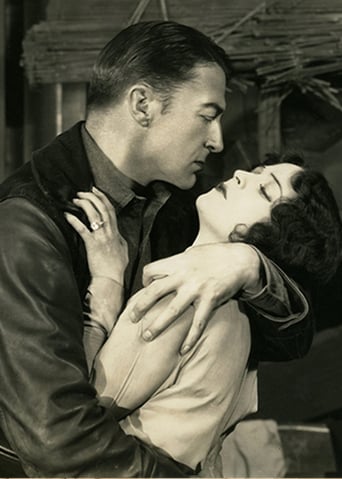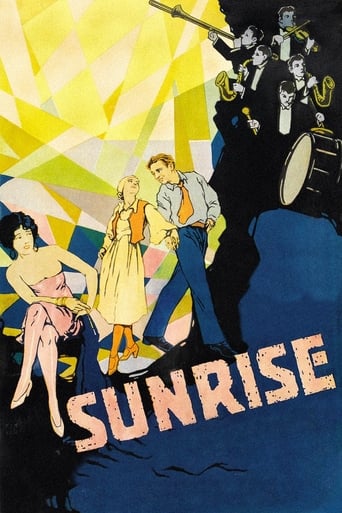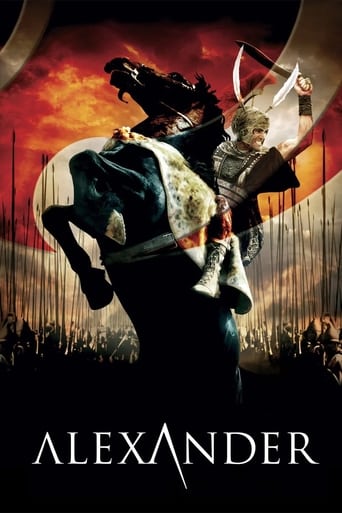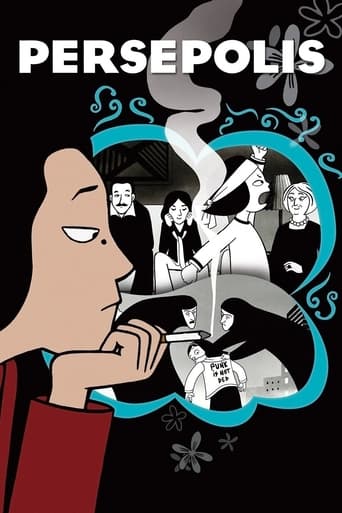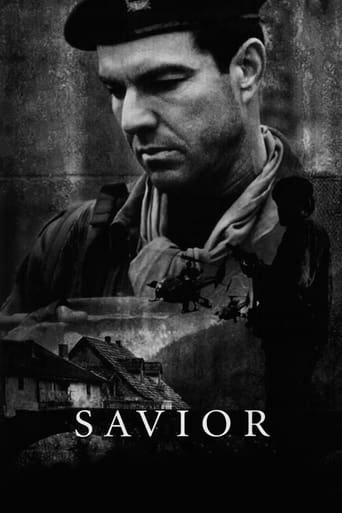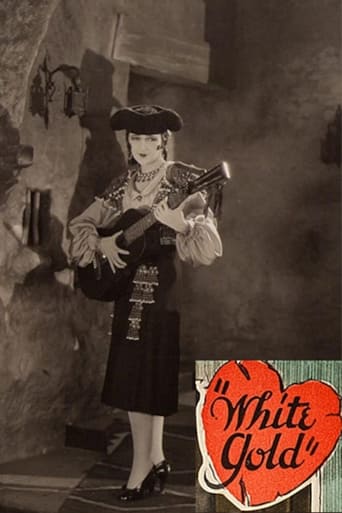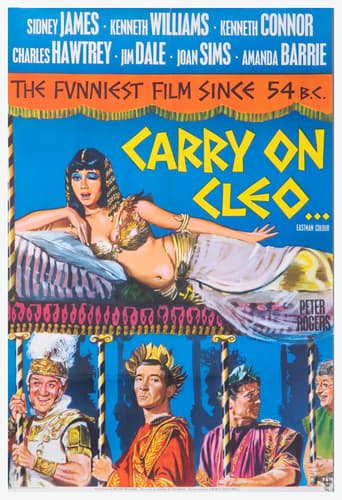Cabiria (1914)
Young Cabiria is kidnapped by pirates and sold as a slave in Carthage. Just as she's to be sacrificed to Moloch, Cabiria is rescued by Fulvius Axilla, a good-hearted Roman spy, and his powerful slave, Maciste. The trio are broken up as Cabiria is entrusted to a woman of noble birth. With Cabiria's fate unknown, Maciste punished for his heroism, and Fulvius sent away to fight for Rome, is there any hope of our heroes reuniting?
Watch Trailer
Cast


Similar titles
Reviews
Very very predictable, including the post credit scene !!!
The film makes a home in your brain and the only cure is to see it again.
The thing I enjoyed most about the film is the fact that it doesn't shy away from being a super-sized-cliche;
By the time the dramatic fireworks start popping off, each one feels earned.
Without Gabriele D'Annunzio's florid commentary this film would have been substantially shorter, while the hammy "silent film" acting and melodramatic storytelling lags far behind Scandinavian cinema of this period. But technically this super-production from Italy otherwise blazes a colossal trail that plainly led the way for the silent spectacles of Griffith, DeMille and Lang, while the sense of fun of the action scenes (particularly a scene depicting the formation of a human pyramid to scale a wall) anticipates Fairbanks at his jauntiest. Beginning with the eruption of Mount Etna (and a lot of toppling pillars) the pace never lets up. Next comes a truly hair-raising scene depicting infants cast into the flaming maw of a statue of Moloch (whose Temple - with three round windows that make it's façade resemble the face of an enormous spider - is one of the many deliriously stylised designs that obviously inspired the German historical epics of Lang and others during the early twenties); while later we see Archimedes gleefully incinerating the Roman fleet with history's first death ray during the Siege of Syracuse. Throw in the boisterous crowd scenes and graceful tracking shots director Pastrone innovatively employs throughout (far more elegant than Griffith's work of the same period) and we have the template for the historical epic as it existed for the next half-century.'Cabiria' also marks a major advance in the use of special effects that marks a decisive break with the trick films of Georges Méliès. Skillful use is made throughout of double exposures to make the action and the locations look even grander in scale than they already are (such as Hannibal crossing the Alps). And there is an additional bonus in the form of an extraordinary dream sequence that anticipates by ten years Walter Ruttmann's 'Falkentraum' sequence in Lang's 'Die Nibelungen'.
There are a great many silent films that deserve to be seen today, not only for their historical importance (or curiosity), but for their qualities as a well made film. Released in Italy in 1914, this first great epic film surely inspired D.W. Griffith to expand his vision, scope and sets for 'Intolerance' (1916), and influenced other film makers, including Ernst Lubitch for his 'Das Weib des Pharao' ('The Wife of Pharoah') (1922), as well as prepared audiences for other American films like 'Ben Hur' (1922), and 'The 10 Commandments' (1923). It's a spectacular epic feast of costumes, sets, and film making techniques.But as a well made film, it also has action and a good story, though for those who've forgotten their World History and the Punic Wars between Rome and Carthage (I only encountered them in my high school third year Latin class), it may be boring, because it is awfully long. This may be why 43% of IMDb votes were a 1, but you really have to give this film its due. The story moves along; the sacrifice of children to Moloch is just one of many amazing sets, scenes and 'action packed thrills.' Allowing for the fact that sound was not yet a part of film making, the director had the actors convey a lot of 'dialog' through mimed gestures, with some acting drawing too much from the staginess of Italian opera. But we get Bartolemo Pagani in his initial portrayal of Maciste, a role he played in 25 films! Looks like he was wearing blackface to look African-- and it turns out he was. He steals most of his scenes.This is clearly a landmark film of the teen years and must be seen. I give it an 8.
The splendid set design back in 1914, which would obviously influence Griffith's Intolerance a few years later, is worth watching. Other than that, as a work in the dawn of film history, Cabiria inevitably suffers several flaws. Comprising exclusively medium and long shots (with absolutely no close-ups), the film should have relied on engaging storytelling, but it just progresses tediously. As a title role, Cabiria should have appeared on the screen more, but she serves as a catalyst and stays behind the scene for most time.Versatile solo piano on the soundtrack (which is, according to the credit of "1990 alternate version" I watched, "Piano Score recorded by Jacques Ganthier, based on the original 1914 score," which I assume is composed by Manlio Mazza) imitates Classical composers in various eras, from Bach to Beethoven to Schumann to Brahms to Debussy, and is quite enjoyable by itself.
It is a little known fact that the feature film was born in Italy - that is, a film longer than the standard one or two reels in length -ten to twenty minutes. It is the crop of early Italian features, all epics, birthed in 1914, that influenced America's Griffith and DeMille. The length of CABIRIA is staggering - originally 2-1/2 hours in Italy and just over two hours here - considering most audiences were used to sitting and concentrating on a plot for only twenty minutes at most.Were there Oscars then, the extraordinary art direction and special effects would have garnered noms - they are outstanding. The cinematography is unique in using early scanning and dollying techniques heretofore unknown in film. The plot becomes very hard to follow because the title cards are history lessons of alliances and battles that have little meaning for us and often we are aware of the cut 22 minutes in the surviving USA version as symbols and relationships which have great dramatic meaning for the players leave us baffled.The print used by Kino and Grapevine video as well as Turner Classic Movies is impeccable - crystal clear and sharp.For all fans of epic movies and for all film historians, this is a must see.

